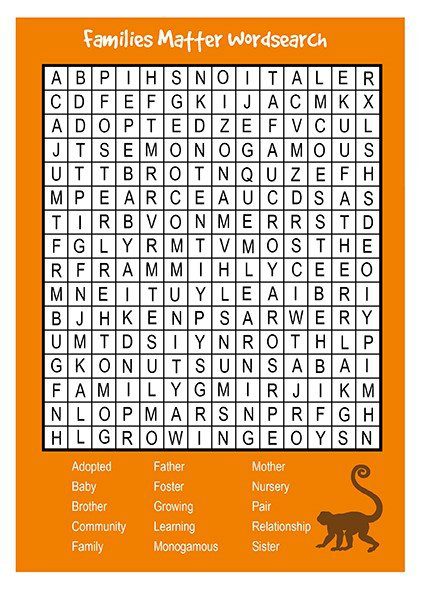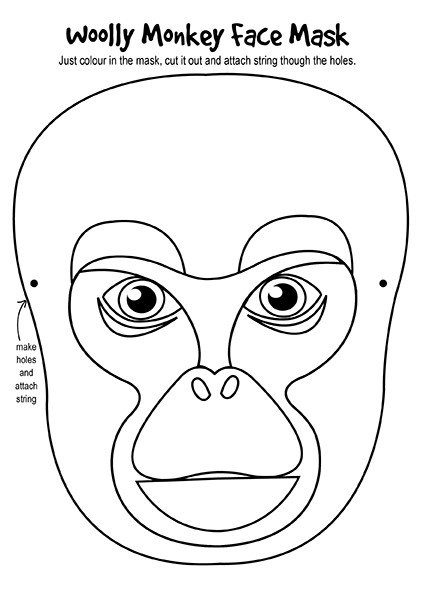Primate Picassos
If you’re inspired by our cheeky chimps, wonderful woolly monkeys and clever capuchins, get sketching and designing! We love seeing the art and crafts young supporters create after visiting the park.
Send these in to apes@monkeyworld.org to feature on this page.
Fundraise for your Primate Pals
Monkey World’s young supporters are always coming up with great ways to support us in our primate rescue & rehabilitation work. Bake sales, sponsored skydive or monkey marathons, we love to hear about them all!
Amber is #STAMPing around for Monkey World!
After visiting the park, Amber was inspired to campaign against the legal UK pet trade in primates. She contacted us for more information on #STAMP, our campaign to Stop the Trade & Abuse of Monkeys as Pets. She has since put together a presentation and has been spreading the word about the pet trade to her classmates!
Noah’s Snowdon Adventure
Noah Smith, just 9 years old, climbed Snowdon on the 14th July 2018, raising £1150 for the Ape Rescue Trust. It was a super-hot day, but Noah managed to make it to the summit in just 3 ½ hours, without a single complaint! Well done Noah, and thank you!
Dylan’s Donation
Dylan gave a donation to Monkey World instead of party bags at his 6th birthday party. They celebrated with these fab monkey cupcakes too! Happy birthday Dylan, and thank you!
From Chimpan-A to Chimpan-Zee
Fun facts about the monkeys & apes living at Monkey World!
A is for Apes. Can you tell the difference between monkeys and apes? Apes are bigger, and don’t have tails. Gorillas, chimpanzees, orangutans, gibbons and humans are all apes!
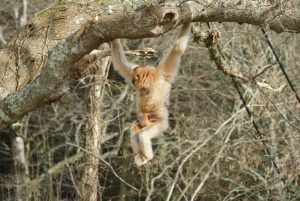
B is for Brachiation. This means the way bigger primates travel by swinging under branches from their forearms, instead of balancing on top of the branches.
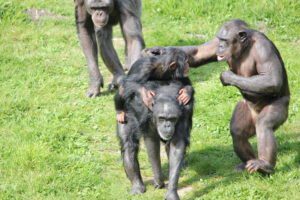
C is for Chimpanzee. Chimpanzees come from Africa in the wild, and are live in large multi-sex groups. They are highly intelligent, and are human’s closest living relative.
D is for Deforestation. Many primates are close to extinction in the wild, because we humans have destroyed their forest homes, meaning they have nowhere to live and breed.
E is for Enrichment. Primates are highly intelligent so keepers give them lots of activities and puzzles to keep them challenged and entertained.
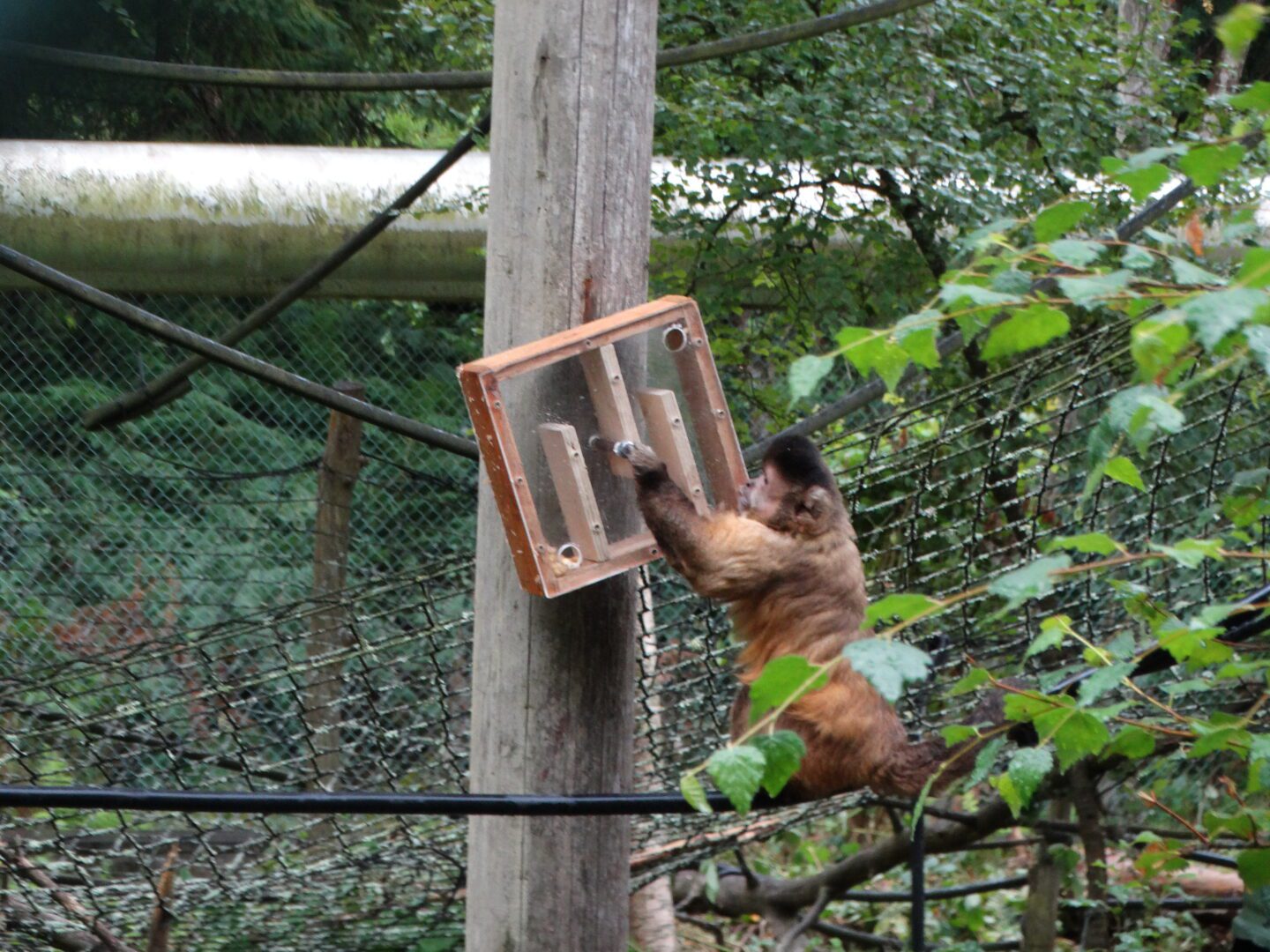
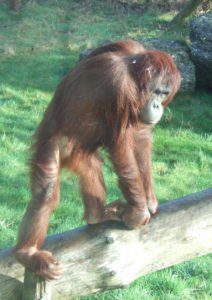
F is for Fist Walking. When orang-utans are on the ground, they walk on all fours, taking the weight of their head and body on bunched fists.
G is for Gibbons. Gibbons are the lesser apes, and are not evolved from the same line as Great Apes. Gibbons tend to be more slender, have longer canine teeth and live in pairs.
H is for Humans. Humans are Great Apes. We differ from other apes in that we walk on two feet, have larger brains, and a complex spoken language.
I is for Insects. Insects are a favourite source of food for many monkeys! The woolly monkeys, capuchins, loris, marmosets and squirrel monkeys all enjoy locusts, mealworms, waxworms and crickets!
J is for Jim Cronin. Jim started Monkey World in 1987 to rehome beach chimps in Spain being used as tourists’ photography props.
K is for Keepers. There are over 260 primates at Monkey World- all who require specialist care, as we have a team of keepers for each section who work very hard to keep the monkeys and apes happy and healthy.
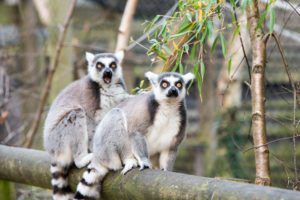
L is for Lemur. The ring-tailed lemurs at Monkey World live in the Malagasy enclosure, and you can see them roaming free along the trees and walkways.
M is for Marmoset. Marmoset are small monkeys who come from the rainforests of Brazil. In the UK it is legal to own these monkeys as pets without any checks or licenses. There are many marmosets at Monkey World who have been rescued from the unregulated pet trade.
N is for Nocturnal. Loris are the only nocturnal primate we have at Monkey World. This means they are awake at nighttime and sleep through the day. They have large eyes and excellent senses to enable them to navigate in the dark.
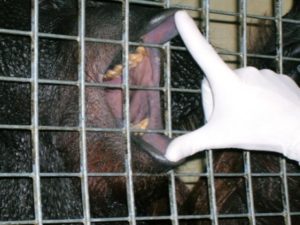
O is for Operant Conditioning. This is a type of positive reinforcement training used to improve the primates’ health and care without needing stressful techniques such as netting and darting.
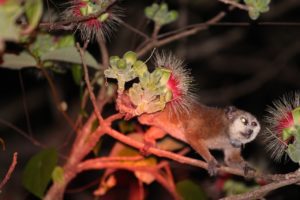
P is for Prosimian. Prosimian are a group of primates separate to monkeys and apes, which include loris, lemurs, and galagos.
Q is for Quick! Many of our primates are highly speedy! Gibbons can travel up to 35mph through the trees whilst Patas monkeys are the fastest monkey on land, travelling over 30mph- this is faster than Olympic gold medalist Usain Bolt!
R is for Rescue. Sadly, many of the monkeys and apes at Monkey World have been rescued from the illegal (and legal) exotic pet trade, the entertainment industry, circuses, or laboratories. These animal have been smuggled from the wild, all for humans’ entertainment. At Monkey World, they live with others of their own kind again.

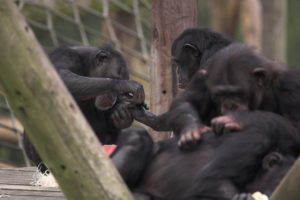
S is for Social. Primates are mostly very social and like to spend time with others of their own kind, grooming, eating and playing. It is important they get to live with other primates to fulfil their social needs.
T is for Terrestrial. Terrestrial means ground dwelling. Some primates do not live in trees, and instead spend live mainly on the ground. Chimpanzees, gorillas and macaques are terrestrial.
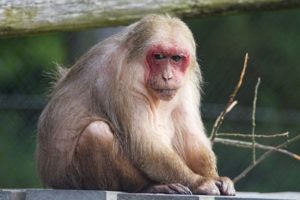
U is for Ugly monkey. Stump-tailed macaques have the affectionate nickname of the ugly monkeys, due to their red faces- but we disagree!
V is for Vietnam. Monkey world has a sister sanctuary, Dao Tien, in Vietnam, which releases endangered gibbons and loris back into the wild.
W is for Woolly monkey. Woolly monkeys are incredibly endangered and difficult to breed. They have amazing “prehensile tails”- which means they can use their tail as a fifth limb!

X is for X-rays. Monkey World has a special primate hospital in the park, where the vet staff can check on the health of the monkeys and apes by running blood tests, examinations and x-rays!
Y is for Yuck! Primates can often make us exclaim yuck! Capuchins urine wash- rub their own urine over them as an insecticide, and lemurs “stink-fight” to assert dominance.
Z is for zoology. Zoology is the study of animals. This is really important if you want to look after primates!


